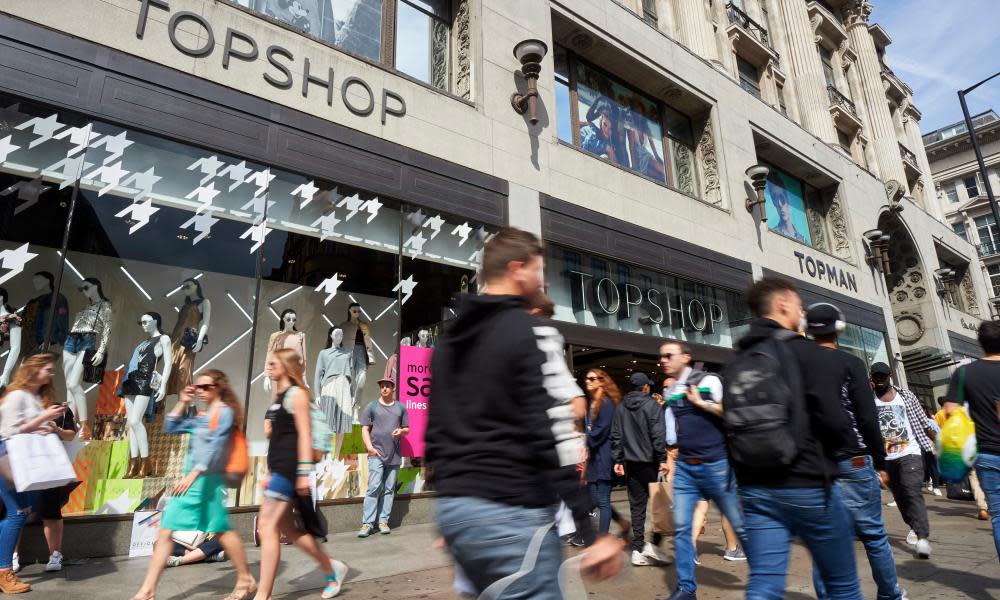How Sir Philip Green can turn Topshop around

A tour of Topshop’s flagship store shows there are plenty of the latest styles, including floral skirts, utility jackets and cut off denim. But even the cornerstone of Sir Phillip Green’s retail empire is in need of urgent repair.
“It reminds me of a very nice Marks & Spencer from 20 years ago,” says James Clark of the London College of Fashion as he walks around the six-floor Topshop and Topman site on London’s Oxford Street.
While the trendy Urban Outfitters next door has festival-ready outfits such as floaty dresses and flowery shirts with reusable water bottles, Topshop’s mannequins look as if they are dressed for a wedding or parents’ barbecue.
“It seems a bit culturally adrift, a bit white middle class. If it’s aiming at a young street demographic of conscious consumerism,” Clark says.
Once a fashion leader, featured in Vogue with celebrities clamouring to attend its catwalk shows, Topshop and Topman have lost their edge and seem confused about who they are targeting.
Green admitted to the BBC on Thursday that Arcadia, the retail group behind Topshop and other high street brands, might not have reacted quickly enough to a market that has changed “fundamentally”. He said: “Whether we haven’t changed quickly enough or we had too many shops or whatever, I think it’s a combination of a lot of things. The answer is you can’t get it all right.”
If the flagship store is aimed at under 40s – the millenials and generation Z – then there are few references to the themes that run close to their heart: sustainability; multi-cultural urban life; and gender-fluidity. There is no link to the online world of selfies and sharing your shopping “haul”.
Hannah Middleton, a lecturer in fashion buying at the London College of Fashion, says: “Generation Z like a connection with a story that they can tap into. There is no evidence of that and our students are aware of Green. Even secondary school students I have worked with say they won’t go into Starbucks because it doesn’t pay tax. They are aware of what is going on in a way my generation perhaps wasn’t and react accordingly.”
While the Oxford Street site houses a hairdressers, a brow bar and a Benugo cafe, it is a long way from the multi-faceted destination store that Primark recently opened in Birmingham, which had at least one fun food or beauty service on every floor.
And that store lays bare Arcadia’s challenge. Primark reportedly spent £70m on the shop, while Arcadia has just £75m set aside to revamp hundreds of sites as part of a £135m turnaround plan.
If the Topshop and Topman London flagship needs work, there are many smaller dowdier shops around the country that must struggle to make a profit. It also has six other brands – Wallis, Miss Selfridge, Evans, Burton, Dorothy Perkins and Outfit – that have drifted even more off course than the two leading labels.
This week, Green won approval from creditors for a restructure that will enable Arcadia to close an initial 50 stores, out of an estate of 570 standalone units, and cut rents on nearly 200 more, with the loss of 1,000 jobs. Topshop has more than 300 outlets in the UK, including standalone sites. But the store, rent and jobs cull will only help boost profits in the short term. Arcadia will have to take some even tougher decisions in the years ahead if it wants to last.
Trimming down the eight brands in his Arcadia empire and closing many more stores should be top of the list.
“It’s pretty likely that decisions are being taken about closing one to four different chains rather than keep all these balls up in the air in a market where there is no stopping the growth of online,” says independent retail analyst Nick Bubb. “The advance of Primark and online has been [Green’s] death knell.”
Miss Selfridge and Evans are already set to close most of their stores and focus on selling online or via wholesale.
Maureen Hinton, an analyst at retail research firm GlobalData said Green needed to focus on Topshop and Topman: “Those are the ones that have fallen less far. If they had the right person running them with vision on brand and understanding the target market you could recover those brands.”

 Yahoo News
Yahoo News 
